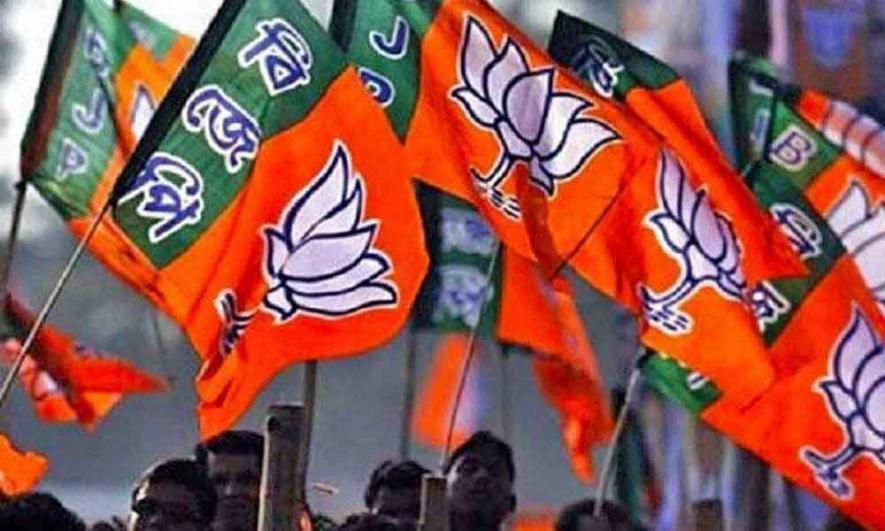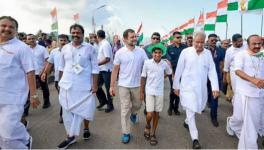BJP: A Party that Wants to Rule Yet Fails to Govern

Representational Image. Image Courtesy: The Sunday Guardian
It is clear from the results of the recent Bihar election and the bypolls held across the country that the Bharatiya Janata Party (BJP) has a strong and dedicated team, both on the ground and in the digital sphere. Yet it is better at winning elections than at governance. This is because the party does not want to govern; it simply wants to rule India, just like the Congress party did in the past. The BJP is quite successful in this, as was also evident from their victories in the 2014 and 2019 Lok Sabha elections and in several state elections between those two years.
Even when they lost an election, as in Madhya Pradesh, the party formed governments by poaching opposition legislators, the most recent case being that of former Congress leader Jyotiraditya Scindia, who was once close to Rahul Gandhi. In fact, the BJP has been very successful in poaching top leaders and legislators of other parties in other states too.
Tapping basal instincts
The most important reason for the BJP’s success in winning elections is that its leaders always play with people’s emotions. More particularly, they make “common sense” appear to be on their side during election campaigns. We can refer to BJP’s politics as “commonsensical politics”. For example, with the help of swaybacks and party cadres, they always campaign on controversial issues and use propaganda around them to gain sympathy and, ultimately, votes. Some such issues are the “debate” on reservation, the Ram mandir, Hindu-Muslim conflict, China-Pakistan, the quota for economically weaker sections, and so on. This strategy ensures that people are lured towards the BJP. Other parties, while they have opinions on these contentious subjects, tend to shy away from an open discussion on them. The BJP ends up very straightforward in this regard.
In the first phase of the recently-concluded Bihar Assembly election, the Mahagathbandhan was leading on 48 seats. On realising this, BJP changed its strategy after the first phase of polling and introduced “jungle raj” into its campaign narrative. BJP leaders now called Rashtriya Janata Dal leader and former chief minister Tejashwi Yadav “jungle raj ka yuvraj.” This helped them increase their leads in the second and third phases with 52 and 53 seats consecutively. Its change in strategy clearly motivated the older generation of voters to support the BJP.
Social media as catalyst for BJP success
The BJP social media team has been instrumental in its success in winning elections. The party was always far ahead of the Congress in terms of social media outreach. For instance, the BJP set up its party website in February 1998, whereas the Congress inaugurated its first official website seven years later, in February 2005. Prime Minister Narendra Modi is an avid social media user, and was closely associated with the online campaign of his party during the 2014 Lok Sabha election. In the book I am a Troll by journalist Swati Chaturvedi, Arvind Gupta, a close aide of Modi at the time, remarks, “For Modi, social media is a necessity, not only passion.”
During the recent Bihar election, the BJP claimed to have created “more than one lakh” WhatsApp groups and promoted its ideas through advertisements placed in Facebook and Google as well. During the Lok Sabha election in 2019, the party is known to have formed more than 50,000 WhatsApp groups to reach out to three crore people in West Bengal, which contributed to increasing its seat strength in the state to 18 from two in 2014 and its vote share from 17% to nearly 40%. The recent appointment of BJPs IT cell head Amit Malviya as deputy in charge of West Bengal ahead of the Assembly election in 2021 will be a headache for the Trinamool Congress. After realising that the English media and liberal classes do not support Modi, Gupta felt it was a necessity for the party to deploy social media platforms. So credit for the BJP’s massive network goes to him. The role of BJP’s social media cell cannot be ignored but the Opposition are continuously doing so. Political parties like the YSR Congress have realised the tremendous power of social media and have invested time and resources in it and benefited from doing so. Now Trinamool leader and West Bengal Chief Minister Mamata Banerjee is investing money in social media campaigns too, with help from political strategist Prashant Kishore.
Connection without understanding
While the BJP has invested energy and money in reaching out to people, they have spent very little time trying to understand them. There seems to be a one-way line of communication between the public and the ruling party. The public allow themselves to be swept away by the passionate rhetoric of BJP leaders, while their own grievances go unheard. This disconnect was perhaps most clearly visible in Finance Minister Nirmala Sitharaman’s suggestion that she was not affected by rising prices of onion because the vegetable is not part of her diet. A comment that has hints of “let them eat cake.” The priority of the BJP has always been to push its own agenda aggressively whether people they rule want it or not. The aggressive pushing through of bills in Parliament is testament to this mentality. Indeed, the recent push for laws against “love jihad” is an obvious attempt to perpetuate the myth of “Hindu khatre me hai” rather than an attempt to address a social problem.
Interfaith marriages are not a problem for Indian society, sexual violence certainly is. Yet, the proposed state laws aim to prevent the former, while perpetrators of the latter walk around with impunity. Additionally, the clear communal rhetoric that followed the passing of the Citizenship Amendment Act, 2019 and the revocation of Kashmir’s special status—a lot of it spewed by members of the ruling party—makes it obvious that while the Modi government tries to justify these moves from the administrative point of view, the party itself thinks differently. Indeed, the continuous efforts towards sustaining the environment of fear, not just under threat of the Unlawful Activities Prevention Act, but also of the troll army and self-proclaimed vigilantes, shows the BJP’s desire to keep the larger public quiet and submissive.
Media: the voting machine
Indian news channels serve to legitimise the propaganda of the BJP. People across the country are easily influenced by these channels and buy the discourse espoused by them. If the fourth pillar of democracy acts as an agent for the government, it becomes almost impossible to prevent it from winning elections. Donald Trump in the United States, Modi, Jair Bolsonaro in Brazil, and other strongmen are winning elections in the same way, with the difference in the role played by the media in these countries. In the New York Times you can find all the lies President Trump has uttered till date. In the United States the entire media is not controlled by one person, but in India you see the media promoting lies with regularity.
The BJP is preying on the vulnerability of the human mind. They are capitalising on factors like economic instability and poor standards of living to serve their own needs. They are winning elections by catering to primordial instincts. This makes it a very good party to win elections, but not the best example of how to run a country at any time.
The author is a research scholar at the Centre of Social Medicine and Community Health, Jawaharlal Nehru University. The views are personal.
Get the latest reports & analysis with people's perspective on Protests, movements & deep analytical videos, discussions of the current affairs in your Telegram app. Subscribe to NewsClick's Telegram channel & get Real-Time updates on stories, as they get published on our website.
























